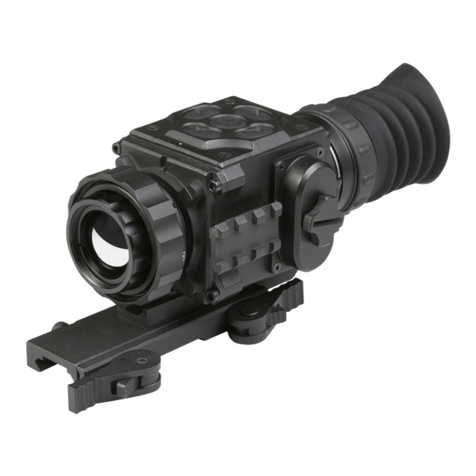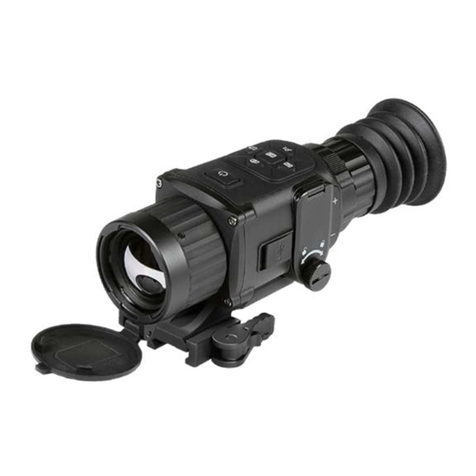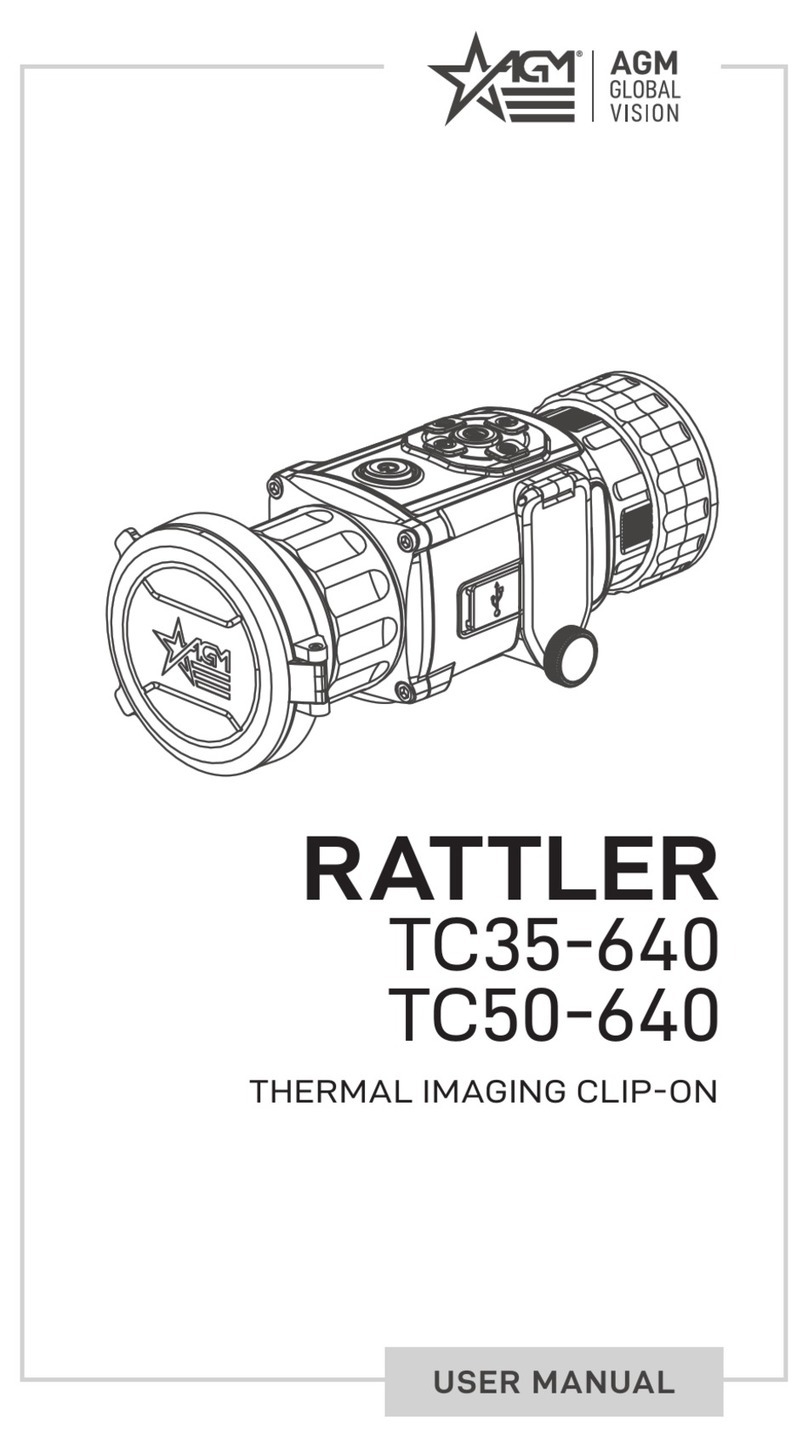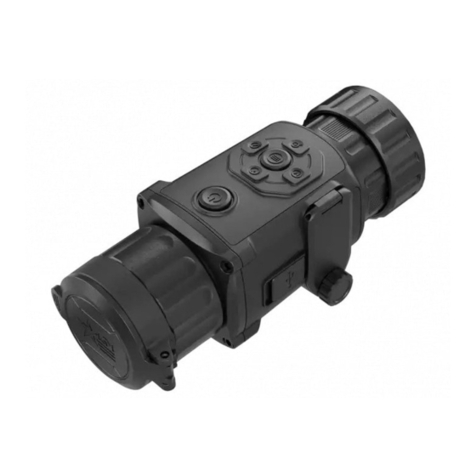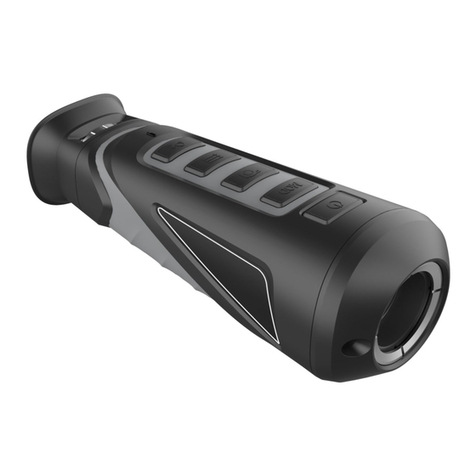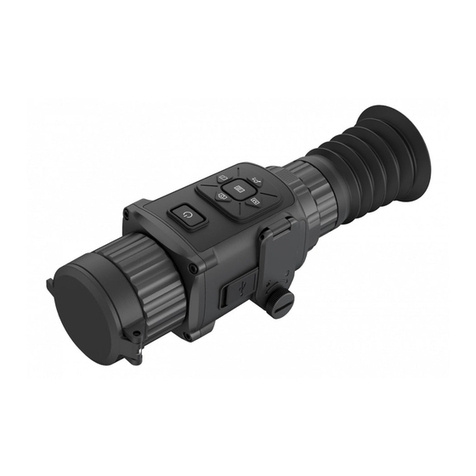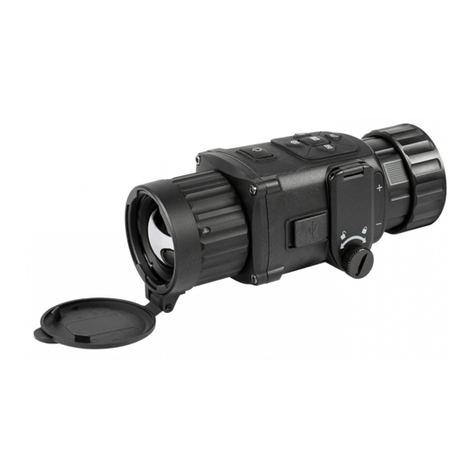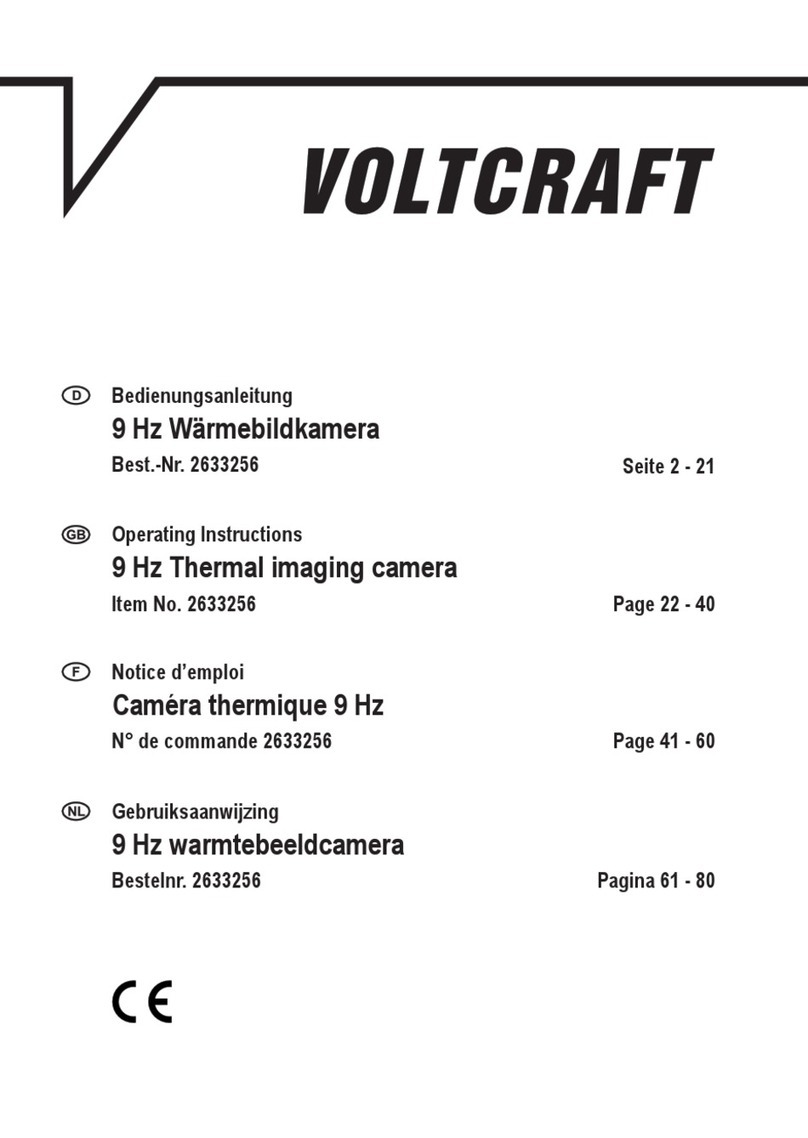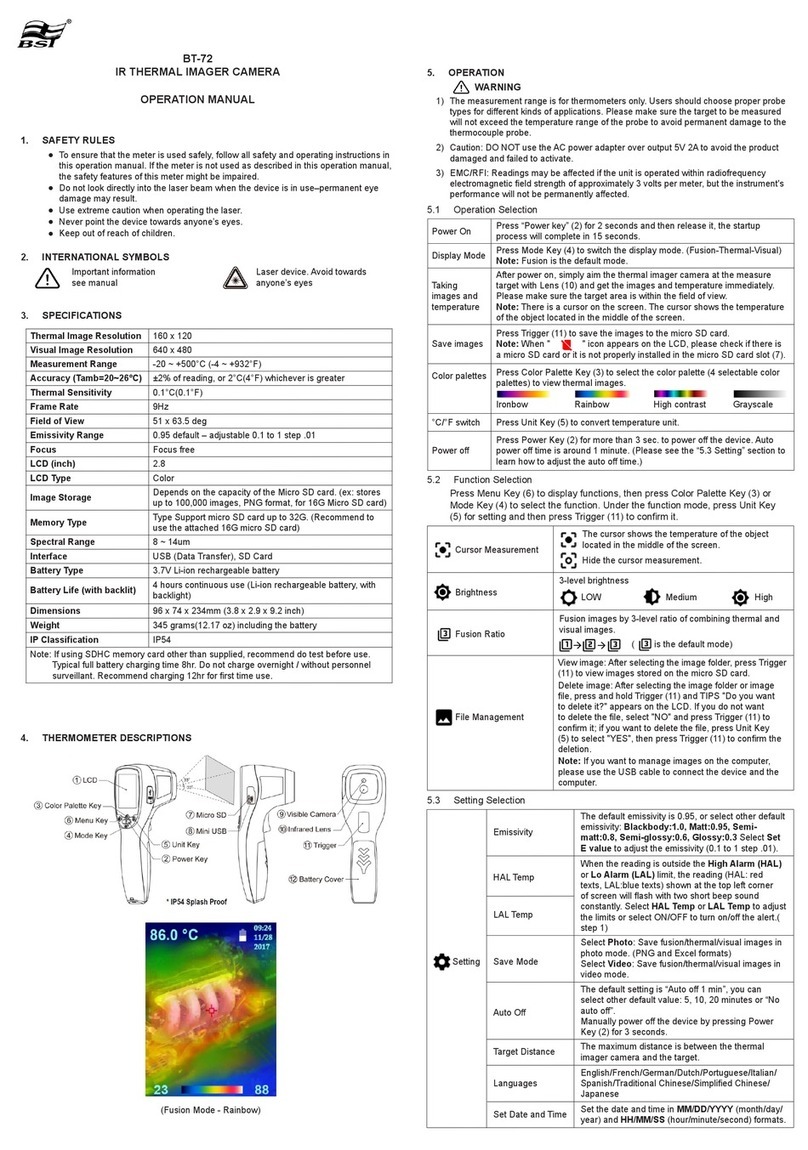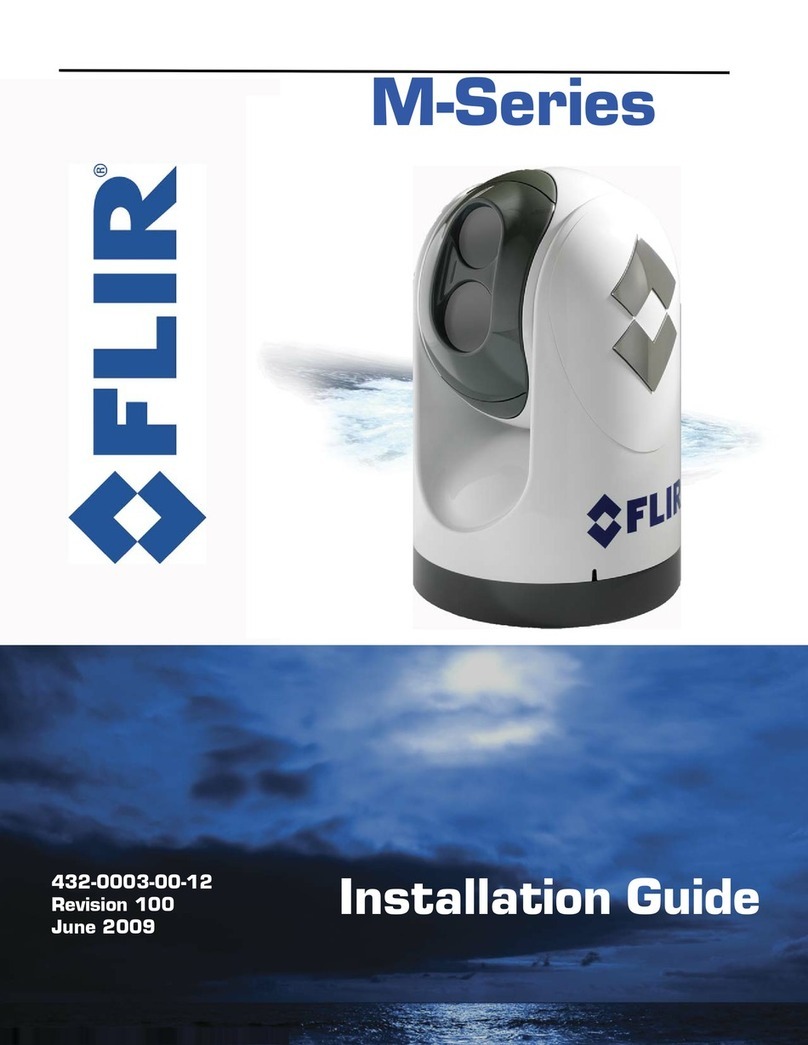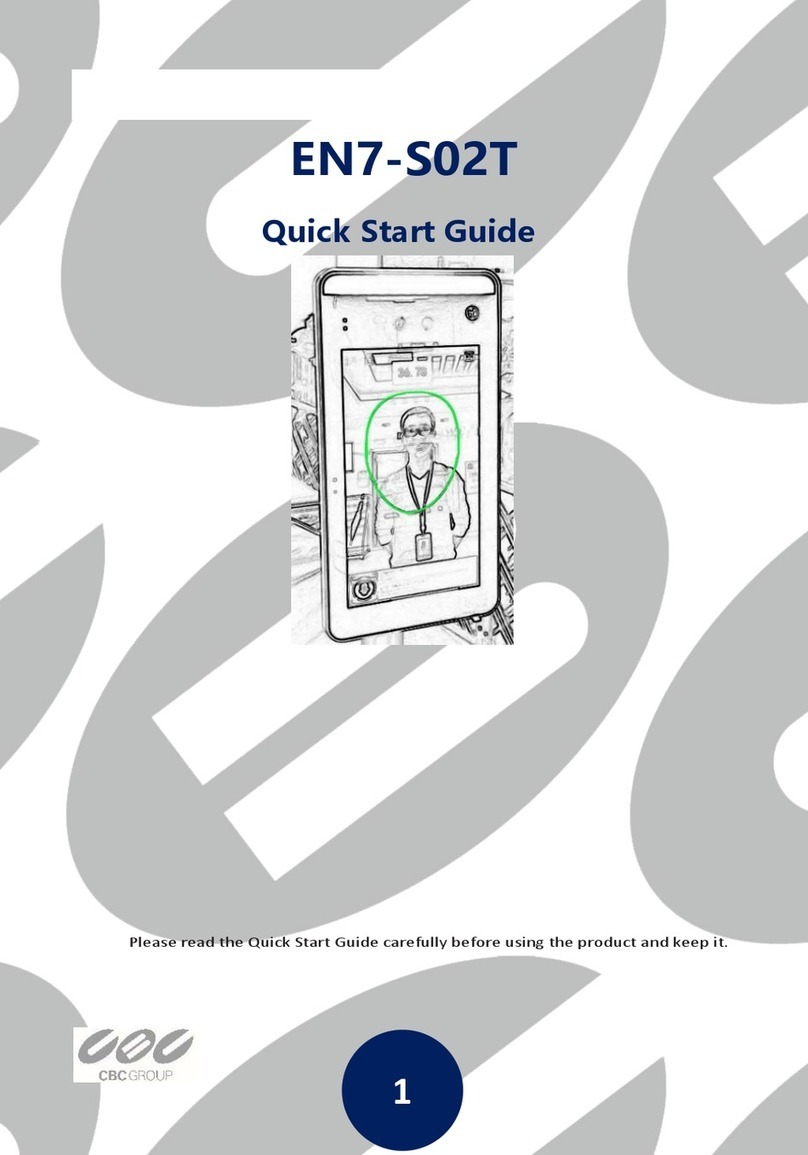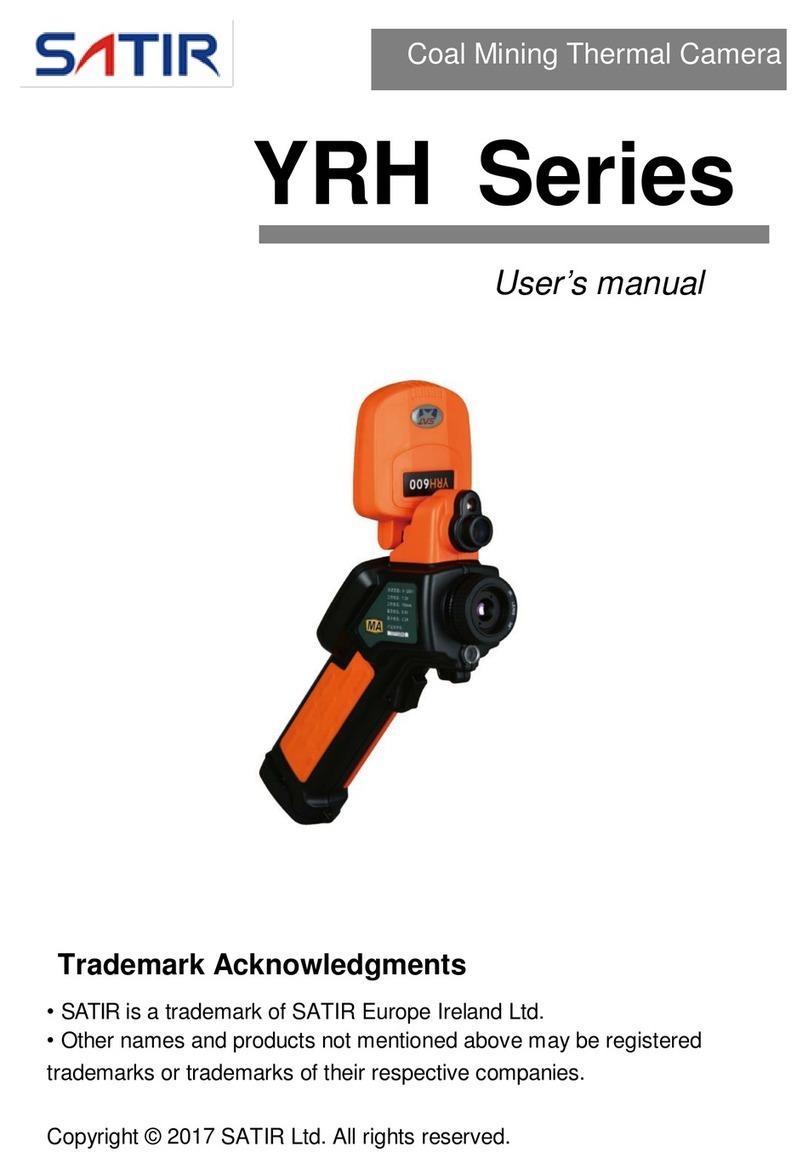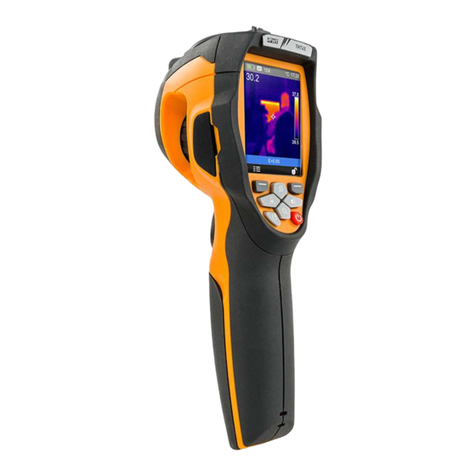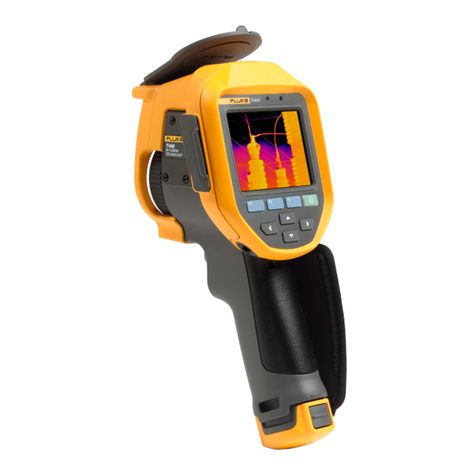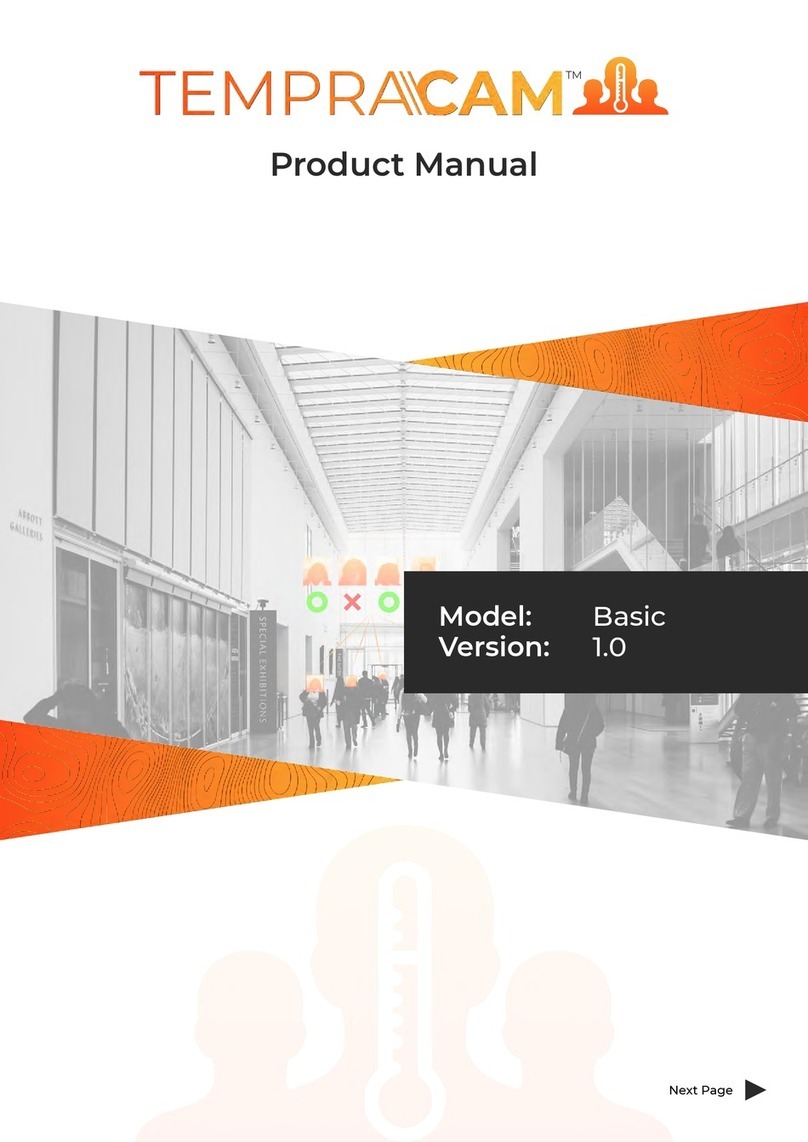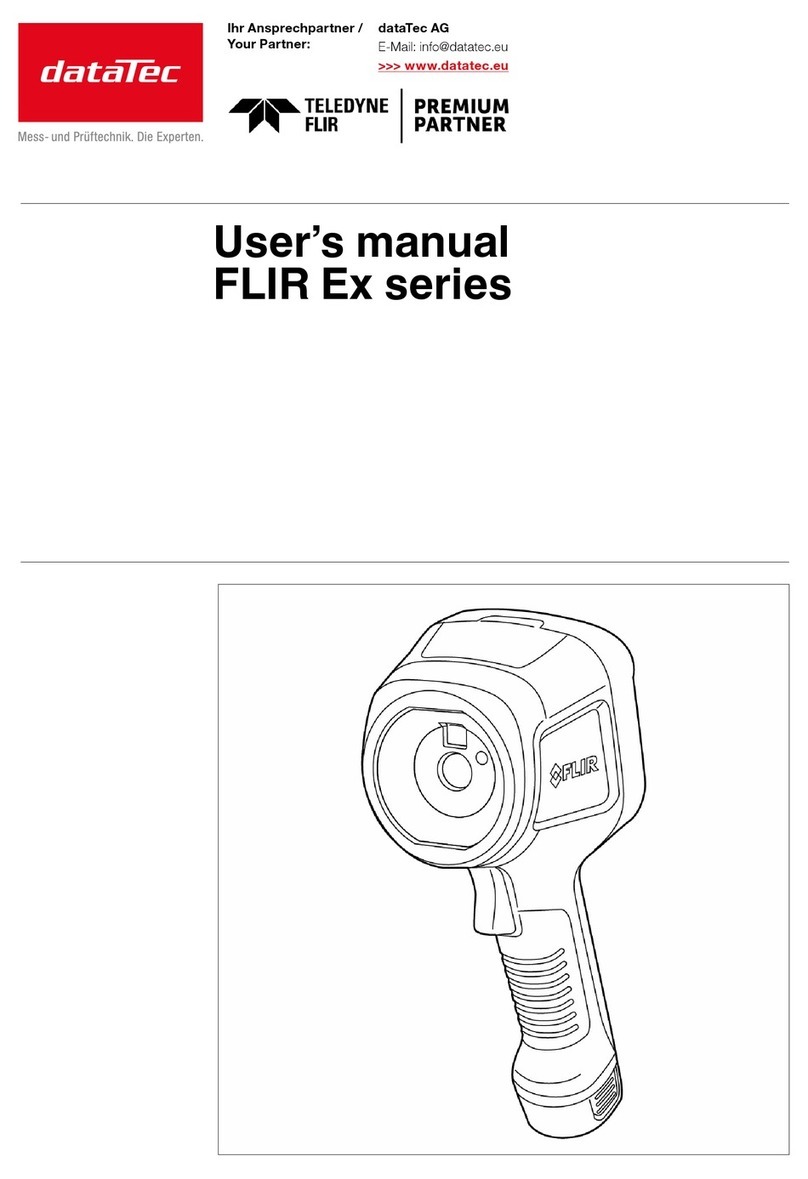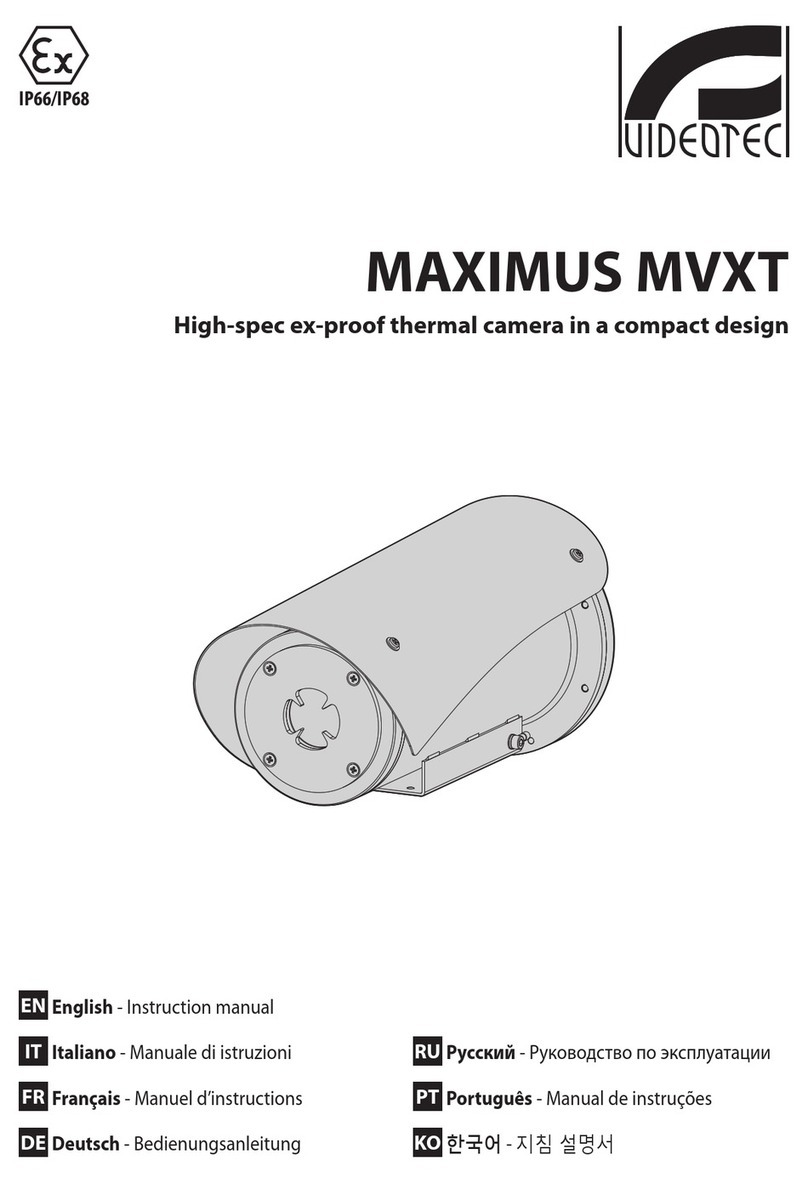
7Anaconda USER MANUAL
To accommodate individual user needs, the Anaconda has a variety of digitally controlled options,
such as:
• Display brightness
• Palette color selection
• User-Controlled, Manual Non-Uniformity Correction/ Flat-Field Correction (UCMNUC/ FFC)
• Imaging enhancements
• Custom settings
Anaconda series clip-ons are based on FLIR Tau 2 cameras that offer improved overall image
quality in a wide range of dynamic thermal environments. The Anaconda includes special, user-
adjustable imaging tools that include:
• Active Contrast Enhancement (ACE) – a digital “Contrast” correction that allows for smart
scene optimization based on dynamic adjustments, where a variety of contrast levels occur
depending on relative scene temperature.
• Second Generation Digital Detail Enhancement (DDE) – a “Sharpness” correction that digitally
enhances the picture, significantly sharpens edges, and further reduces image noise.
• Smart Scene Optimization (SSO) – a fine-tuning computational correction that significantly
improves overall visual acuity for targets that have thermal signatures similar to the surrounding
background.
• Automatic Gain Control (AGC) – a “Gain“ correction that used to automatically adjust the gain to
an appropriate range, the weaker the image signal, the stronger the gain.
• User-Controlled Manual Non-Uniformity Correction/ Flat-Field Correction (UCMNUC/ FFC).
There is a mechanical shutter between the camera sensor and the lens. This shutter is used to
perform a non-uniformity correction (NUC), also known as flat-field correction (FFC). During FFC,
the shutter presents a uniform temperature source to each detector element in the array. While
imaging the flat-field source, the camera updates the offset correction coefficients, resulting
in a more uniform image after the process is complete. All Anaconda models allow for user to
manually trigger or interrupt scheduled UCMNUC/ FFC function.
• Silent Shutterless NUC™ (SSN) – In addition to User-Controlled Manual NUC/ FFC, all Anaconda
models employ a digital, supplemental, non-mechanical flat-field correction that extends
periods between mechanical shutter events and further reduces image noise. SSN is an always
ON enhancement.
Information on the current operating state (battery status, active function, etc.) is continuously
shown, making field operation of the Anaconda simple and convenient.
Manufactured for exceptional durability, the Anaconda has a lightweight and robust aluminum
body. A side Picatinny/Weaver rail allows the user to install an optional HD Video Recorder, WiFi
Attachment, Extended Battery Pack, or other equipment.
A standard NTSC/PAL video input/output connector enables an external video display (monitor,
TV) or video recorder to be connected to the Anaconda.
The Anaconda is powered by two CR123A (2×3V) batteries. An external 6VDC/600mA power
source and USB power bank can also be connected to the Anaconda.
The quick-release mount of the Anaconda fits any Picatinny, MIL-STD-1913, or Weaver weapon rail.
The mount’s lever-cam clamping device ensures easy, quick, and reliable mounting and removal.

